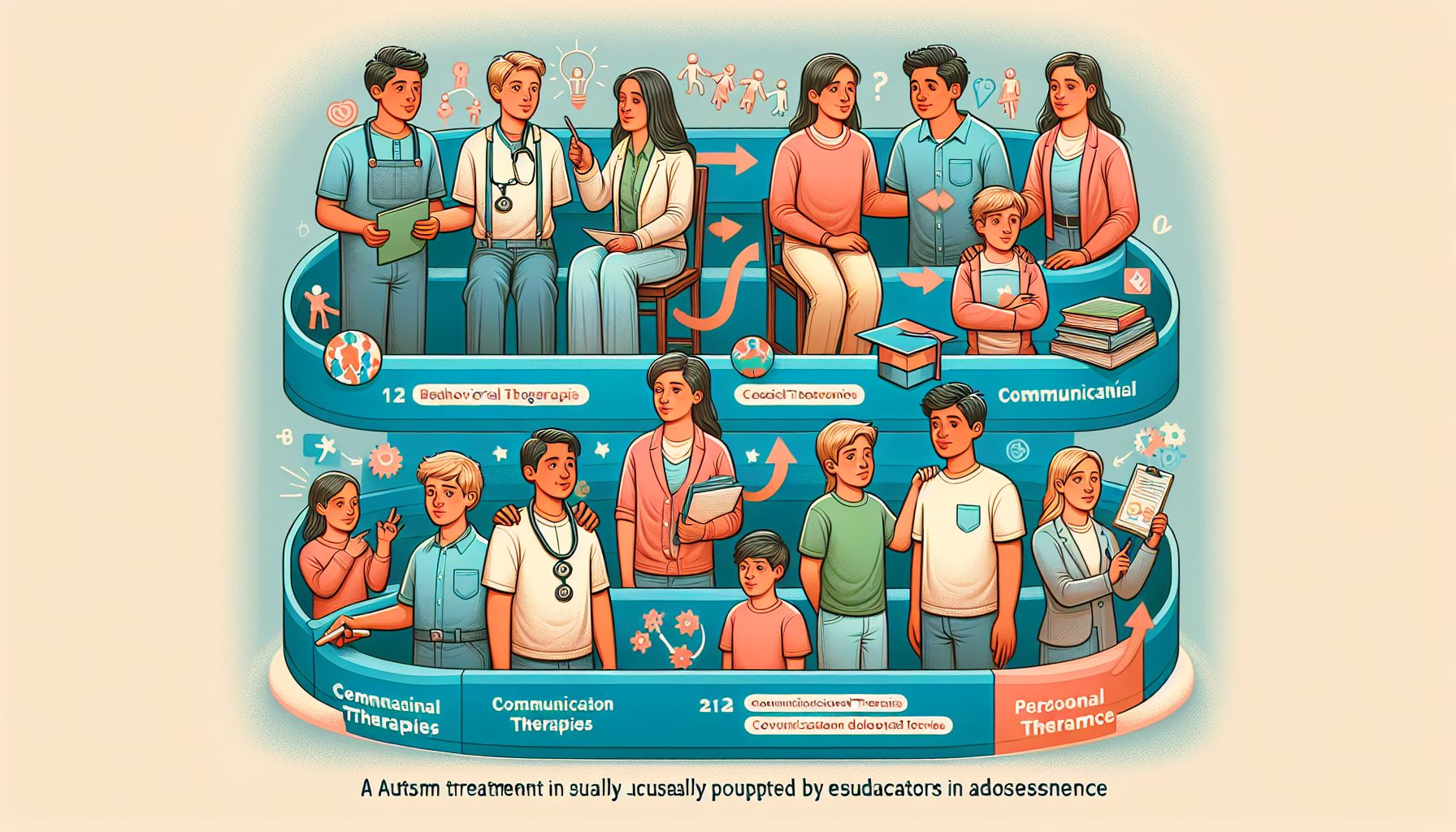When a teenager receives a diagnosis of Autism Spectrum Disorder (ASD), it might open up an ocean of questions, concerns, and uncertainties for you and your family. As an advocate for your child, you can help them navigate the unpredictable waters of adolescence compounded by the complexities of autism. Studies show that approximately 1 in 54 children in the U.S. is diagnosed with ASD, according to the Centers for Disease Control and Prevention (CDC) latest data, underscoring the crucial need for effective treatments. This article will guide you through the process of understanding and accessing autism treatment in adolescence.
Decoding Autism Spectrum Disorder
Autism Spectrum Disorder, as the name suggests, indicates a wide range of conditions classified as neurodevelopmental disorders. These conditions are typified by challenges with social interactions, communication, repetitive behaviors, and restricted interests. The term “spectrum” points to the variation in the severity and type of symptoms individuals with ASD present.
The Unique Challenges of Adolescence with ASD
Adolescence is known as a period of intense growth and change, not just physically but emotionally and socially. For teenagers with ASD, this phase can be an especially challenging time. You must understand, your child is not just grappling with ASD, but also the changing dynamics of adolescence.
Autism affects how your teen communicates and interacts, which can further complicate their navigation through adolescence. Hence, some of the issues your child might face are difficulties fitting in socially, anxiety or depression, and challenges associated with physical changes.
Therapeutic Approaches for ASD in Adolescence
There is a wide range of therapeutic approaches at your disposal to help manage ASD in your teenager. These approaches are often used in combination to address the multifaceted challenges that ASD presents.
Cognitive Behavioral Therapy (CBT)
CBT can be an effective method to help adolescents with ASD deal with anxiety, which is commonly faced in this stage of life. This form of therapy helps your child gain better control over their thoughts and behaviours, thereby reducing feelings of anxiety.
Social Skills Training
Social skills training is an integral part of the therapeutic approach for adolescents with ASD. It is often conducted in group settings and helps your teen understand and navigate social cues.
Applied Behavior Analysis (ABA)
ABA is a widely accepted treatment for children with ASD, even into adolescence. ABA focuses on teaching socially significant behaviors by breaking down desired behaviors into steps and applying behavioral principles to improve those behaviors.
Medication
Though no medication can cure ASD or even treat its main symptoms, some medications can help manage specific symptoms. For example, medications can be used to manage high energy levels, inability to focus, depression, or seizures.
Always consult a healthcare provider or psychiatric professional before starting any medication treatment.
Advocating for Your Teen in School
School can present substantial challenges for an adolescent with ASD. To help your child navigate these challenges, you could work with the school to implement an Individual Education Program (IEP).
An IEP is a plan that outlines necessary accommodations and services needed to help your child succeed in school. This could include services like speech therapy, occupational therapy, or paraprofessional support.
Attending parent-teacher conferences, collaborating with school staff and keeping an open line of communication with your child’s educators can be beneficial in ensuring your child’s needs are met.
Preparing for Life After High School
As your teen approaches adulthood, it’s important to start planning for the transition out of high school. This might involve vocational training, higher education or independent living.
Various programs can help adolescents with ASD transition into adulthood, and it’s essential to explore all options to locate the best fit for your child’s needs.
Conclusion
Adolescence can be a trying time for your child, especially when they’re dealing with ASD. While this may be an overwhelming thought, remember that with proper interventions and the right help, adolescents with autism can learn to manage their condition effectively and lead successful lives.
Seeking help from therapy and educational resources, being proactive as an advocate in your child’s education and future planning can lead them to a promising path. Although the journey may be filled with twists and turns, you can be the guiding light leading your child to a bright future.
Knowledge is power, and understanding more about ASD and how it impacts teens can equip you with the ability to meet your child’s needs head on. With love, patience, and a strong support system in place, your teenager can navigate the complexities of adolescence with ASD – paving the way to adulthood with confidence and self-assuredness.

